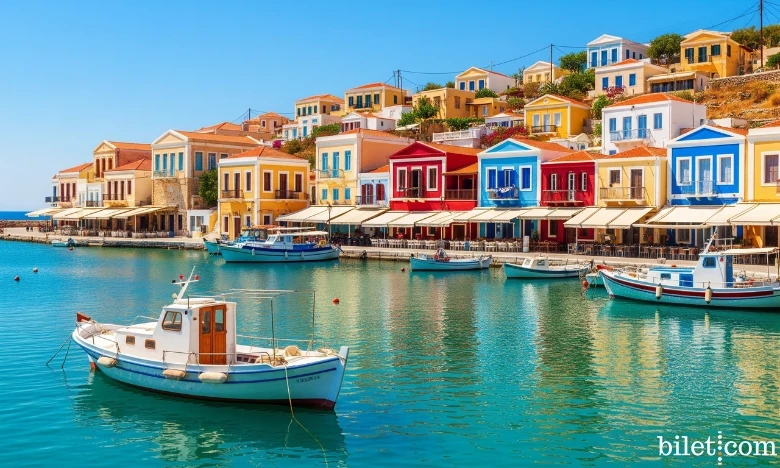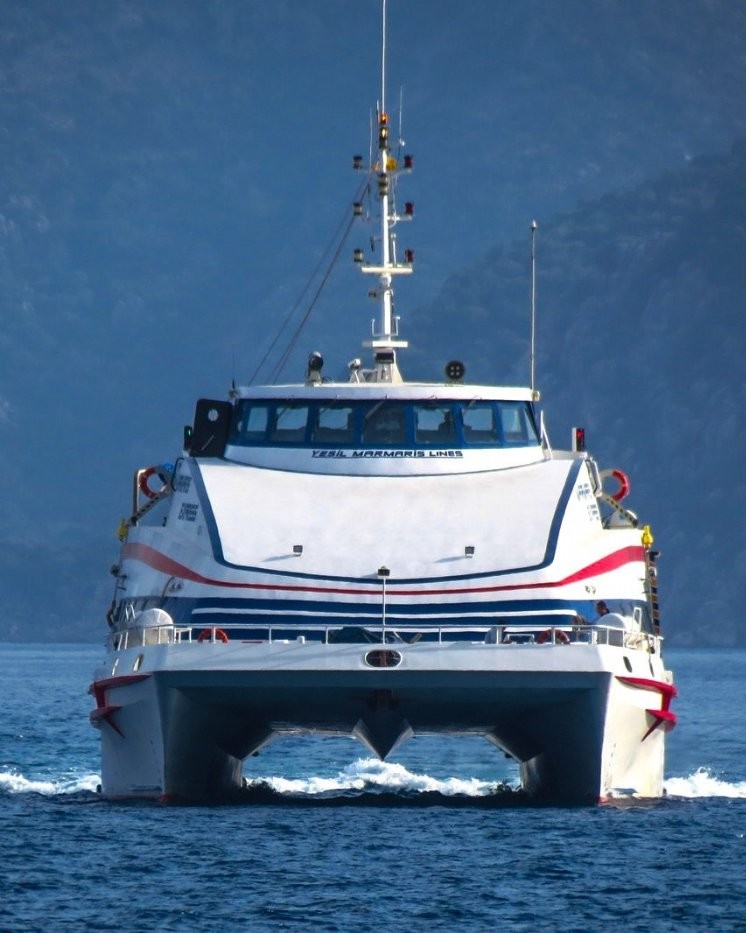The Island Behind the Names: Meis, Megisti, Kastellorizo
Why this tiny island has so many names sums up its rich and multicultural history:Megisti (Μεγίστη): Megisti, the ancient and current official name of the island, means "the largest" in Greek. This may seem ironic at first glance, as Meis is one of the smallest settlements of the Dodecanese Islands. However, this name is a reference to the fact that it is the largest of the small archipelago group in which it is located, not the island itself.
Kastellorizo (Καστελλόριζο): The most widely known and used name for the island internationally. The origin of this name dates back to the Knights of St. John, who ruled the island in the 14th century. The Knights built a castle on the reddish soil and rocks on a hill overlooking the harbor. "Castello Rosso", which means "Red Castle" in Italian, has evolved into "Kastellorizo" in the local language over time.
Meis: The most commonly used name of the island in Turkey, "Meis", is the shortened and changed form of its official name, "Megisti", over the centuries to adapt to Turkish phonetics.
The Tides of History: From Peak to Bottom, from Ashes to Rebirth
The history of Meis has witnessed much more dramatic ups and downs than that of other islands in the Aegean.Antiquity and Knights: Inhabited by Dorians in ancient times, the island remained in the sphere of influence of its powerful neighbor Rhodes. Its strategic location attracted the attention of the Knights of St. John in 1306, and they built the "Red Castle" on the island, turning it into an important outpost watching the Anatolian coast.
Ottoman Period and Golden Age: Meis, which came under Ottoman rule, experienced the absolute peak of its history, especially in the 19th century. The island captains and merchants became incredibly wealthy by transporting goods to all corners of the Mediterranean with their own sailing ships called "Kastellorizian Schooner". This wealth is also reflected in the architecture of the island; the three-story, pastel-colored, magnificent neoclassical mansions with wooden balconies along the harbor are the product of this period. During this "golden age", the population of the island exceeded 10,000, and schools and churches financed by wealthy families were built.
Tragedy of the 20th Century: The collapse of sailing trade with the invention of steamships marked the beginning of the end for Meis. The island suffered a series of disasters throughout the 20th century. It was bombed by the French during World War I. It was severely damaged by the great earthquake of 1926. The worst destruction came during World War II. Occupied first by the Italians, then by the British and Germans, the island was almost completely destroyed by an explosion and fire at an Allied ammunition depot. These tragedies caused almost the entire population of the island to emigrate to all corners of the world, especially to Australia, and the island remained a ghost town for decades.
The Mediterraneo Effect and Rebirth: The event that changed the fate of the island was the Oscar-winning Italian film Mediterraneo , shot here in 1991. The film introduced the abandoned but still enchanting beauty of Meis to the world. Thanks to this, the island was rediscovered, the children and grandchildren of the former islanders began to return, to restore the ruined houses, and Meis gained its peaceful and popular tourist identity today.
Unique Heritage on the Coast of Anatolia: Lycian Rock Tomb
The most striking detail that distinguishes Meis from all other Greek islands is the monumental Lycian rock tomb dating back to the 4th century BC, carved into the steep cliff just above the harbour. A typical architectural example of the ancient Lycian civilisation, this tomb is the most concrete evidence of how closely intertwined the island has been with Anatolia throughout history, especially with Kaş (ancient Antiphellos) just across the road. This structure, which you will not see anywhere else in Greece, reinforces the unique identity of the island.Magical Beauties of Meis: From Port to Cave, From Castle to Monastery
Don't let Meis' small surface area deceive you; every corner of the island has its own beauty and story:Pastel Colored Harbor: The entire life of the island flows around this U-shaped harbor embraced by deep blue waters. The neoclassical mansions painted in colors such as indigo blue, ochre and pastel yellow are like a painting with flowers hanging from their windows, wooden chairs in front of their doors and restaurants right on the sea. It is an ordinary event to see the Caretta caretta turtles swimming in the calm waters of the harbor.
Blue Grotto: This experience is the pinnacle of a Meis trip. The entrance to the cave, which can be reached by small boats departing from the harbor, is so low that you have to lie down or bend your head to get in. After this brief excitement, you find yourself in a completely different dimension: The inside of the cave is illuminated with an incredible, phosphorescent blue color created by the sun's rays reflecting off the seabed. Swimming in this natural wonder is a truly magical moment.
Castello Rosso (Red Castle): The ruins of the Knight's Castle, a short walk from the harbour, are the island's most beautiful viewpoint. From here, you can enjoy a bird's eye view of the colourful harbour, Kaş right across from you and the silhouette of the Taurus Mountains.
Mandraki: A smaller and quieter fishing and yacht harbour located on the other side of the hill behind the main harbour. Here you can see fishermen mending their nets and witness the more local and peaceful side of the island.
Agios Georgios tou Vounou (Monastery of St. George on the Mountain): A discovery that requires some effort but is definitely worth it. Reached by climbing about 400 steps from the port, this small monastery offers incredible panoramic views and deep silence. The small church in the catacomb is quite impressive.
It's time to plan a Meis getaway to discover this colorful paradise smiling at you right across from Kaş, swim in the enchanting light of the Blue Cave, and get lost among the stone buildings that are witnesses to the ups and downs of history!







